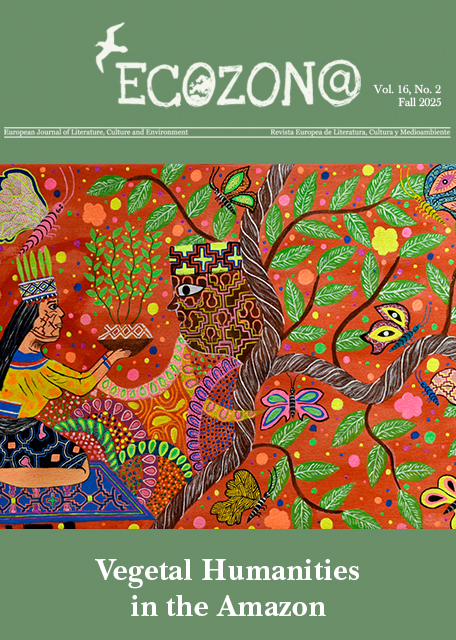<b>Terraforming and the City</b> // Terraformación y la ciudad
DOI:
https://doi.org/10.37536/ECOZONA.2016.7.2.859Parole chiave:
Urbanism, town planning, science fiction, ecology, terraforming, geoengineering // Urbanismo, planificación urbana, ciencia ficción, ecología, terraformación, geoingenieríaAbstract
Science fictional depictions of cities have explored a variety of utopian and dystopian modes of habitation and control that have fed into popular imagination regarding the shape of future societies. The intersection between terraforming, the adaptation of planetary landscapes, and the interfaces for these interventions into multiple environments (the city) have accrued new resonances in the contemporary context of climate change. This paper surveys the image of the city in narratives of terraforming from H.G. Wells’s The Shape of Things to Come (1933), through the American pulp sf of the 1950s, the ecological sf of the 1970s-1980s and the terraforming stories of the 1990s, and up to Kim Stanley Robinson’s Red Mars, Green Mars and Blue Mars (1992-1996). Exploring how the image of the city appears in these narratives, this paper raises questions about how these interfaces with nature explore possible modes of habitation. What does this mean for a burgeoning sense of place that has begun to consider how such imagined habitations become spaces that are embedded in nature and thus reflect new conceptions of the human?
Resumen
La representación de la ciudad en la ciencia ficción ha sido utilizada para explorar una variedad de modos de morada y control utópicos y distópicos que han alimentado la imaginación popular con respecto al aspecto de las sociedades futuras. La intersección entre la terraformación, la adaptación de paisajes planetarios, y las interfaces para estas intervenciones en múltiples ambientes (la ciudad), han acumulado nuevas resonancias en el contexto contemporáneo del cambio climático. Este artículo considera la relación entre la naturaleza no-humana y la ciudad en narrativas de terraformación desde The Shape of Things to Come (1933) de H.G. Wells a través de los pulps de ciencia ficción americanos de los años 50, Genesis (1988) de Frederick Turner, y las novelas Red Mars, Green Mars y Blue Mars (1992-1996) de Kim Stanley Robinson. Mediante la exploración de cómo la ciudad se asocia con la naturaleza no-humana en forma del animal, de bacterias y plantas en estas narrativas, este artículo sugiere preguntas sobre cómo estas interfaces con la naturaleza exploran posibles modos de morada. ¿Qué significa esto para un creciente sentido de lugar que ha comenzado a considerar cómo estas moradas imaginadas se convierten en espacios que se incrustan en la naturaleza y, por lo tanto, reflejan nuevas concepciones de lo humano?
Downloads
##submission.downloads##
Pubblicato
Fascicolo
Sezione
Licenza
Authors who publish with this journal agree to the following terms:
a) Authors retain copyright and grant the journal right of first publication with the work simultaneously licensed under a Creative Commons Attribution License that allows others to share the work with an acknowledgement of the work's authorship and initial publication in this journal (CC BY-NC for articles and CC BY-NC-ND for creative work, unless author requests otherwise.
b) Authors are able to enter into separate, additional contractual arrangements for the non-exclusive distribution of the journal's published version of the work (e.g., post it to an institutional repository or publish it in a book), with an acknowledgement of its initial publication in this journal.
c) Authors are permitted and encouraged to post their work online (e.g., in institutional repositories or on their website) prior to and during the submission process, as it can lead to productive exchanges, as well as earlier and greater citation of published work (See The Effect of Open Access).










